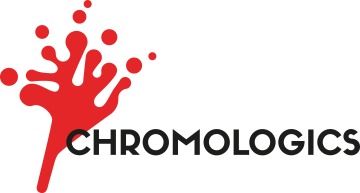sponsored content
Colour startup looks to fungus for natural red
6 Mar 2018A new red colour derived from fungus could satisfy food companies’ appetite for a natural shelf-stable alternative to carmine, according to Danish biotech startup Chromologics.

Insect-derived carmine is the gold standard in natural red pigments because of its vivid colour and stability in formulations. However, manufacturers have been under pressure to find an alternative to appeal to vegetarians, halal and kosher consumers, as well as those who dislike the idea of a food colour made from insects.
Chromologics is a spin-off from the Technical University of Denmark, and it obtained initial funding at the beginning of 2017 to help accelerate tests and get its ChromoRed ingredient off the ground. Natural stabilityChromoRed is a tasteless alternative for use in solid foods.“It’s an in-betweener,” Ødum said. “Carmine is a very, very good compound stability-wise. ChromoRed is not very far behind in terms of stability, and is much better than the beetroot colour. Because it’s from a fungus it is of course natural, but it’s also vegan and halal and kosher.”Red colours have been a particular challenge for food companies, particularly as synthetic colours have fallen out of favour in Europe. Ødum says naturalness is non-negotiable for food colours these days. Indeed, natural colours have outsold synthetic versions in the region since 2011, according to market research from Mintel and Leatherhead. Sustainability beyond agricultureIn addition, Ødum claims that ChromoRed may be more sustainable than food-derived pigments like those from beets or tomatoes. “Is it OK to use food to colour other foods?” he said, explaining that Chromologics makes its pigments in fermented fungi in a bioreactor, which takes agricultural products out of the equation. Fruits and vegetables for colouring foods theoretically could be used to feed people directly, but “nobody is going to eat this fungus”, he said.ChromoRed is currently the company’s lead product, but it is also working on other colours. The fungus naturally makes a lot of red colours, but it also makes purple, orange and blue colours in much lower quantities. Regulatory approvalsThe company says it has already seen a lot of interest from food companies and major colour houses, but it still needs regulatory approval from the European Food Safety Authority (EFSA) and the US Food and Drug Administration (FDA) before ChromoRed can be used in foods. Its own preliminary tests have been promising, however, and Ødum points out that it is closely related to Monascus pigments – from red yeast rice, for instance – which have been used safely in Asia for many years.He expects the European approval process to take three to four years, but Chromologics is already looking toward future projects.“We have identified a subset of fungi that can not only make this colour but others as well,” Ødum said.